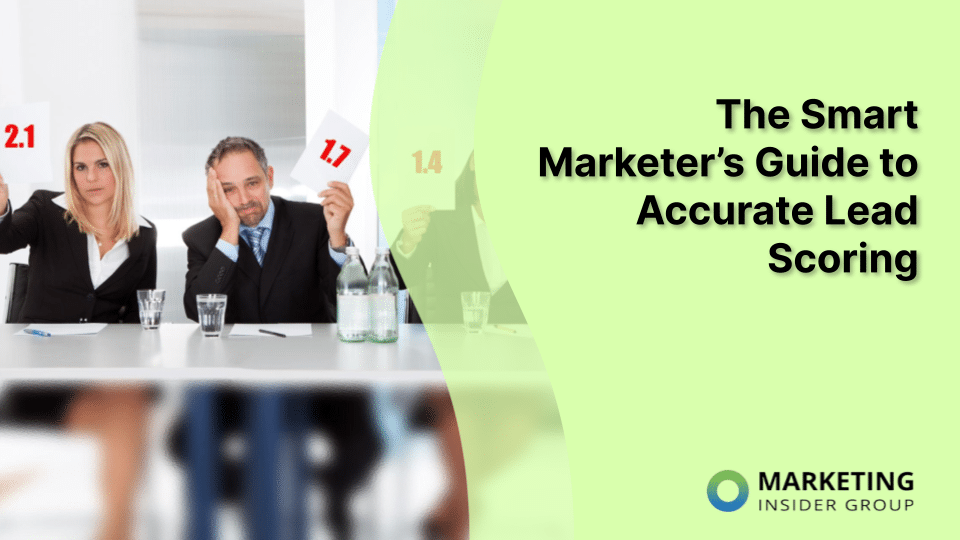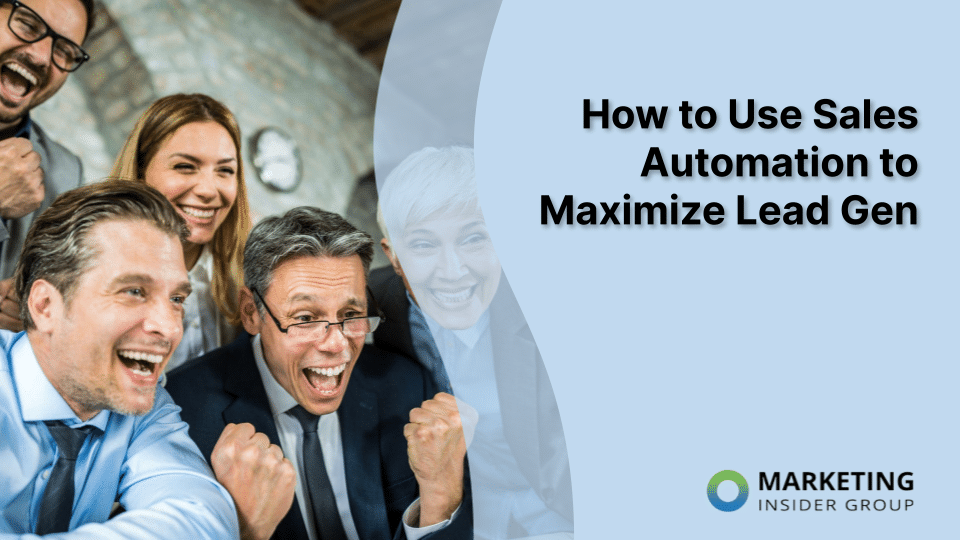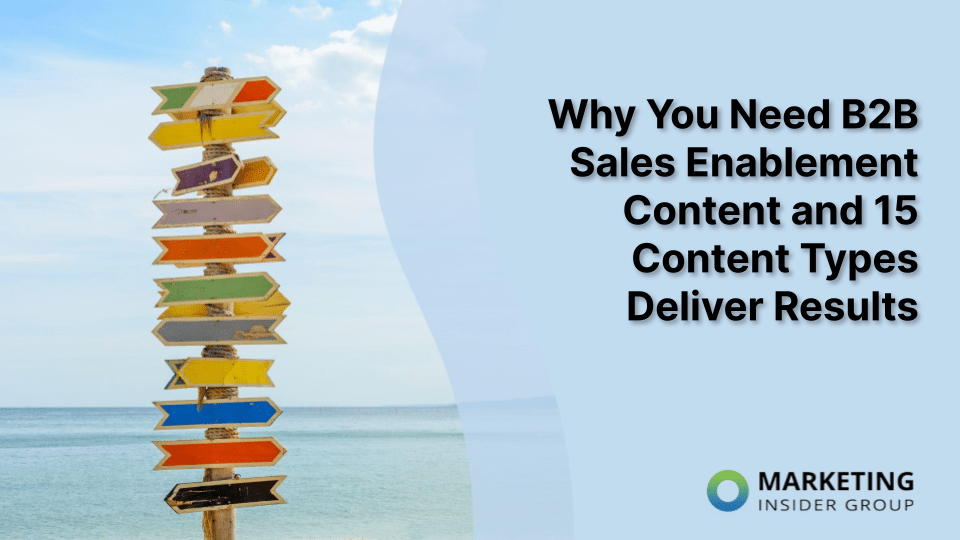
Using Content Lead Scoring to Link Content Marketing and Sales
This scenario is a familiar, and probably a daily, occurrence if you live in a big city: You’re walking down the block, headed to work or out to lunch, or maybe zig-zagging your way through a two-way crowd, and you see someone standing smack dab in the middle of it all, and they happen to lock eyes with you. With a cheerful gesture of hello, they greet you. And while such a greeting varies, you have probably heard a variety of:
- “Hello ma’am/sir, how’s it going?”
- “Hey! I like your <insert item of compliment.>”
- “Do you like to <insert action related to product or service they are selling, such as “cooking”>?”
- “You look like a good person!”
- “Hi there. Have you ever heard of <insert product or service>?
And then there was the “creative” (but failed) attempt that was used on one of the members of our team:
“Hey, miss! You dropped something!” (She had passed by this individual earlier in the day, and they had used the same type of introductory line on another passerby.)
These individuals are all actively trying to market their product, service, or cause. The idea is to present a human face and foster a person-to-person interaction so the company (and the individual doing the marketing) can accomplish one of the following:
- Raise awareness of a product, service, company, or cause
- Receive prospective customer/donor contact information
- Sign new customers up for their service
- Solicit donations
Sometimes, this type of marketing (called “guerrilla” or “street”) works. People will stop, out of kindness or curiosity. Other times, people walk right past.
And while such a marketing tactic is forceful, many companies still use it because it works, because these marketers are successful time and again. And they have only mere seconds to engage the consumer, dish their pitch, and create some type of relationship.
But how do these marketers know who to target? What cues do they pick up on that tells them that a person will be receptive of what they have to say? How do they know this person is ready to convert (or whatever the end goal may be)?
Quick Takeaways:
- Content marketing adds precision to your estimates of customers’ positions along your sales funnel.
- You need to work out your own definitions of a good lead and a bad lead.
- You need content to target consumers at every stage of the funnel.
- Eventually, all content should aim to convert.
And these questions segue us into the heart of this blog post’s topic: Sales, leads, and hitting the mark in terms of content.
You’re Hot, Then You’re Cold
The sales funnel (or buyer’s journey) can also be viewed as a temperature knob on a stove or as a thermometer.
- If they’re cold, they’re not yet ready to do anything.
- If they’re lukewarm, they’re starting to think about purchasing your product or service.
- If they’re warm, they’re doing their research and shopping around, trying to figure out what is best for them.
- If they’re hot, they’re ready to convert and make a purchase.
And while the sales funnel or thermometer analogies are good for giving us an outline of where a customer might be, they fail to actually tell us where the customer is.
Enter smart content marketing.
Content, Sales and Leads – Oh My!
We know that you know that content marketing works wonders (and not just because we tell you so, but because it is a truth woven into the fiber of your profession). But if you’re only focusing on it in terms of how it can help drive traffic to your website, it’s time to press pause and think again. Content is an exceptional tool when it comes to lead generation and sales. It can warm up a prospect toward making a purchase or convince them to make a purchase. And it can help you see where someone is in the buying journey so you can strategize your next move.
We’ll look at it in three steps:
- Create definitions and a scoring system
- Get help from an AI
- Convert your prospects
Step 1: Definitions & Scoring System
What exactly is a marketing lead? In this case, we aren’t talking about the basic definition of a lead (which is initiating/stimulating the buying process of a consumer who has an interest in your product or service). Instead, we mean defining what a “lead” is for you: your team, your strategy, and your company.
To get your ideal definition, have a joint meeting with your sales and marketing teams. Discuss the following for both sales and marketing:
- The current target market
- Definition of a “lead”
- What makes a good lead
- What makes a bad lead
- Your current process for nurturing leads
Next comes the challenge of combining the two into a happy union that both teams can work towards.
Step 2: Incorporate AI
You don’t have to incorporate AI, but at this stage of the game, you’d be purposely putting yourself at a disadvantage compared to your competitors. By incorporating marketing automation software, you can take a lot of the guesswork out of the equation when it comes to your leads.
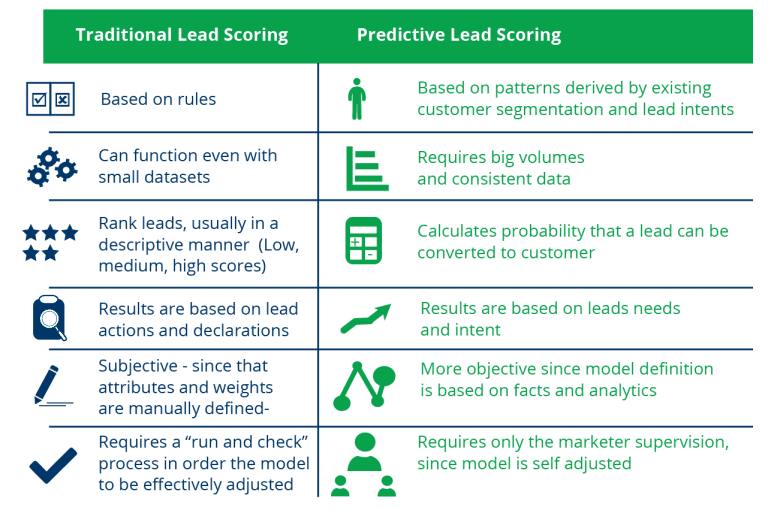
You can pinpoint their digital behavior and, based on the different factors of their engagement with your site and content, you can determine the precise moment to begin transitioning them further through the buyer journey.
We’ll go into more detail regarding content for different stages of the journey.
Step 3: Convert Your Prospects
Keep moving prospective customers further through the buying journey until they finally convert.
Prospective customers will come to you at all stages of the buying journey. Some may be at the beginning stages of their research whereas others are shopping around for the best value. That is why having your definitions set and automated marketing software in place are necessary!
Content Topics for Every Stage
Let’s talk content. In terms of marketing and selling, your content has two important roles:
- It draws traffic to your website.
- It moves prospective customers through the buying cycle.
Now, while content can help get a variety of traffic to your site, we are more concerned with how specific content can draw specific traffic to your site. And this content is specific to a particular stage of the customer’s buying journey.
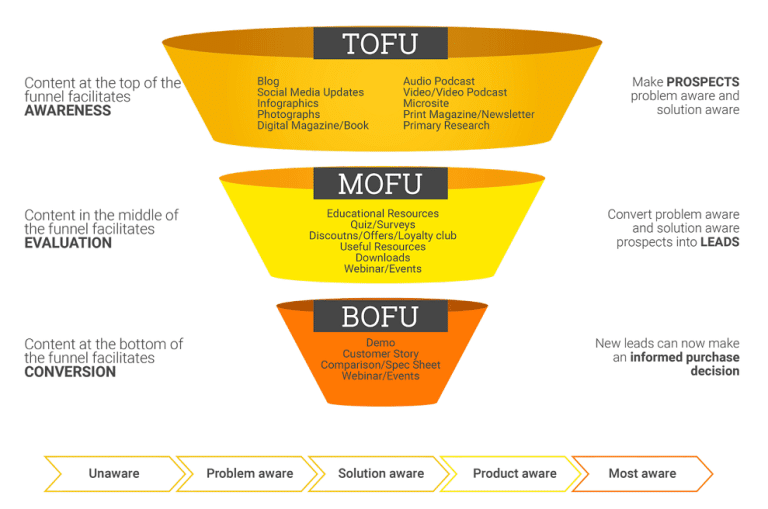
Also, the type of content doesn’t really matter, but the topic of the content does. (Of course, some types of content perform better than others, and some topics lend themselves better to different formats, but that’s your call for what works for you. We just want to make it clear that what you talk about is key versus how you deliver the message.)
Awareness/Interest
The first stage is when a prospective customer realizes they have a need for a product or service that you provide. At this stage, you want to make them aware that, “Hey! We’re out here! We have what you need!” and generate interest not just in the product or service but in your product or service.
Topics could be:
- About your company, its products/services, and its purpose for offering said products/services
- What is a ______?
- Fun facts about ______.
- Why do I need a ______?
The goal of this content should be educational. Prospective buyers are craving information, so be sure you (and not a competitor) are the one providing it.
Consideration
The prospective buyer has decided that yes, they probably need or want this product or service. But they still need some more information to narrow down all options available to them.
Content should focus on things like:
- Product or service comparison (either yours compared to a competitor’s or a comparison of all the options your company offers)
- Consumer reviews or products or services
- Webinars
- Case studies, white papers, and reports
- How to choose a ______
Providing prospective customers with this information will help them narrow their choices and move on to the next stage.
Purchase
The prospective customer is ready to become a customer. To get them to seal the deal, you’ll need to craft content that is highly personalized. Depending on your company’s structure, resources, and other factors, such content could be:
- A one-on-one phone conversation or in-person meeting
- A discussion with a representative using a chat tool
- Free trial of the product
- Demo of the product
- Frequently Asked Questions page
Once the prospective customer feels comfortable with their decision (that is, all actions, research, and so on leading up to this moment), they will make the purchase.
Content Captures Customers
Content should be made to draw in traffic of individuals at all stages of the buying journey and continue to lead them to the end.
We know that leading your prospective customers through the buyer journey with the content you offer is a long end game. Sometimes customers will stop at a certain point and come back months later.
But we promise doing it this way will offer more (and long-lasting) conversions compared to other tactics, such as the previously described guerrilla marketing at the beginning of this blog. And the use of gimmicky lines or in-your-face approaches is not necessary.

